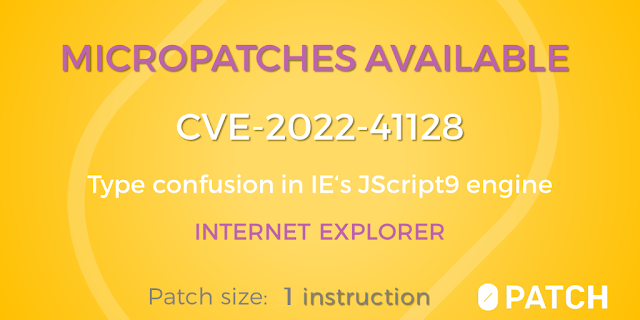This month brought the last security updates for Windows 10 version 21H1. What if your organization is still using it and doesn't want to - or can't - upgrade it yet?
Don't worry, we have previously security-adopted Windows 10 v1803 and v1809, and subsequently Windows 10 v2004 and v1909. Now it wouldn't be fair if we didn't also security-adopt version 21H1.
So we have.
These micropatches will be included in 0patch PRO and Enterprise licenses along with all other micropatches we're issuing - which means that users protecting their Windows 10 v21H1 with 0patch will also receive our micropatches for "0day" vulnerabilities in various products.
In order to have our micropatches applied, Windows 10 v21H1 will have to have December 2022 Windows Updates (the last official updates for this version) installed.
We welcome all interested organizations to contact sales@0patch.com for information about pricing, deployment, or setting up a trial.
P.S.: We're getting close to Windows Server 2012 end of official support by Microsoft in October 2023. You guessed it, we're going to security-adopt this server as well, in case you're already getting nervous about that. This is a good time for you to start a free 0patch trial, so send an email to sales@0patch.com.
To learn more about 0patch, please visit our Help Center.


